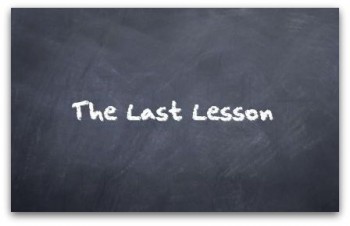Mentoring
How do you describe what you do so that your ideal clients easily understand?
In today’s guest post, originally published online at The Times of India, Meeta Sengupta describes mentoring for teachers in India.

Mentoring
Everybody needs a pat on their back. From time to time, everybody needs to be able to talk to somebody more knowledgeable, more experienced and more philosophical. Sometimes because one needs a little encouragement, sometimes to renew the faith in oneself. Often one needs a more experienced hand to help us decide direction. More often than not, it is simply because we need to know that somebody is listening and somebody cares. In this competitive world, it is a relief to find some one who is objective and invested in our success.
Mentors help us with our existential questions, but do not answer them for us. They are there for us both as a sounding board and with handy advice when we tackle our classic stage of life questions: What should we do next? How should we do it? What pitfalls can we envisage and try to avoid? Mentors have the experience and the networks to help us reach farther than we can on our own. They are essential for fledgelings, or for any change or ‘lift off’ stage of life. Mentors are our booster shot in life.
Indian culture, and for that matter many other traditional cultures have mentorship built into the warp and weave of life. Our Guru Shishya parampara was not merely the relationship between teacher and student. The Guru is a mentor, often for life. One relies on the gurus, goes back to them in times of need. Sometimes just to rest, sometimes to lean back, often just to feel safe from the battering that one may receive at work. One comes back renewed, refreshed and ready for the next challenge – and if the guru is skilled, one does not even know how it happened. Then, just the thought that the door of the guru is always open is a resource, a source of strength.
As teachers, we are often mentors to our students, though maybe not to all of them. For those who we mentor, a little nudge here, the right questions asked at the right time, a little mental exercise, a challenge set and achieved – these are some of the tools we use everyday. Students may not even realise they are being mentored. The most elegant mentoring is subtle. Parents are mentors too – but their emotional engagement in the child’s success impairs their mentoring. There is little room for strong emotions in mentoring.
Teaching could be a lonely place, and teachers, more than any other profession need a mentoring network to keep them on track. Much of teaching, in practice is about talking to students, holding one’s own in the staff room and looking invincible. That is exhausting – we know it. All leaders know this, and just like in the corporate world, teachers too need renewal and support.
The best teachers are those who set up self renewal mechanisms. They have senior teachers as mentors. They build relationships full of affection and respect inside their classes. In the staffroom they are able to give and receive advice with no loss of face, because it is between peers. The feedback loops here are constructive and therefore effective. Some people seem to do this naturally, others watch and learn. The ones who watch, learn and then pass it on are those who build institutions.
Mentoring should be a part of the formal role of seniors in organisations and must be kept separate from the reporting relationships or from appraisal networks. This is very difficult in small places. In schools senior teachers and head teachers should have formal mentoring responsibilites – a duty of care in addition to the duty of sight. Formal mentoring would mean allocating time and resources to regular sit down sessions, phone/email conversations and interventions. A mentor has a duty to look out for their charges. Informal mentoring networks look easier but depend too much on personalities. Those who are shy or reclusive often miss out on the potential for growth. Mentoring networks, whether senior or even peer networks do not happen automatically, they need building and nurturing
We seek mentors for advice, but when they give it, it can be difficult to take. Traditional and untutored mentoring can be oppressive too. It is a skilled mentor who guides but does not stifle. It is an extremely lucky person who finds a good mentor. It is a wise person who seeks many mentors and learns from each. And, it is a silly person who takes their mentors for granted. Mentoring others is hard work and takes time away from one’s own life and interests. The rewards are few – satisfaction and the joy of making someone else successful. Within corporates the worth of mentoring has been appreciated and forms part of the formal role, but even then much depends upon the goodwill of the mentor. It is often a one way street. All the more reason for the person receiving support (I am not fond of the word – mentee) to respect the time and effort put in by the mentor in their success. The input is such a treasure that thanks are inadequate, often payment inappropriate.
Does everybody deserve a mentor? We may think so, but would the mentors agree? There is a story in hindu mythology that speaks of a time when Shiva, the most perfect performer would not perform until he found the perfect audience – Vishnu. So it is with mentors, as with gurus. They know that some people benefit more from their inputs. With some people stronger bonds are created, and with the common cause comes a more successful partnership. Mentors seek that, because that is their main reward.
Finally, can mentoring be taught? Is it a skill or a talent? Both of course, but more of a skill – thus the tools can be taught. Most people can give advice, not all can be mentors. Mentoring involves self discipline, objectivity and the ability to eliminate oneself from the discussion. At the same time, mentoring need not be a complex process – sometimes all it takes is a warm hug, virtual or real. From time to time.
About the Author/Further Resources
Meeta Sengupta is an educator and advisor specializing in business education, cross border skill development, and coaching and mentoring. She has worked in a range of sectors including commercial banking, investment banking, publishing, education and skills development. She has strong research, teaching and leadership skills honed through many years of experience in academia, corporate, and multilateral organizations. Meeta currently runs an enterprise that supports various projects across the sector including Words and More (writing by children), a knowledge sharing platform for educators and supports self –organised efforts of the educators in Higher Education as part of her role as chairperson of the North India chapter of the Higher Education Forum.
Follow Meeta on twitter (@Meetasengupta)

 Sara is a Brighton based hypnotherapist & psychotherapist who provides problem-free therapy which connects people with their inner resources and goes deep into the unconscious mind to create powerful change. Sessions are available on a one to one basis or through Skype.
Sara is a Brighton based hypnotherapist & psychotherapist who provides problem-free therapy which connects people with their inner resources and goes deep into the unconscious mind to create powerful change. Sessions are available on a one to one basis or through Skype. 

 Frederique Murphy (
Frederique Murphy (

 Julia Neiman is the Founder of Transform For Life, an online coaching program for teens, and Executive Director of Group Home Consultants, a nonprofit that provides independent living skills training to transition age foster youth.
Julia Neiman is the Founder of Transform For Life, an online coaching program for teens, and Executive Director of Group Home Consultants, a nonprofit that provides independent living skills training to transition age foster youth.
